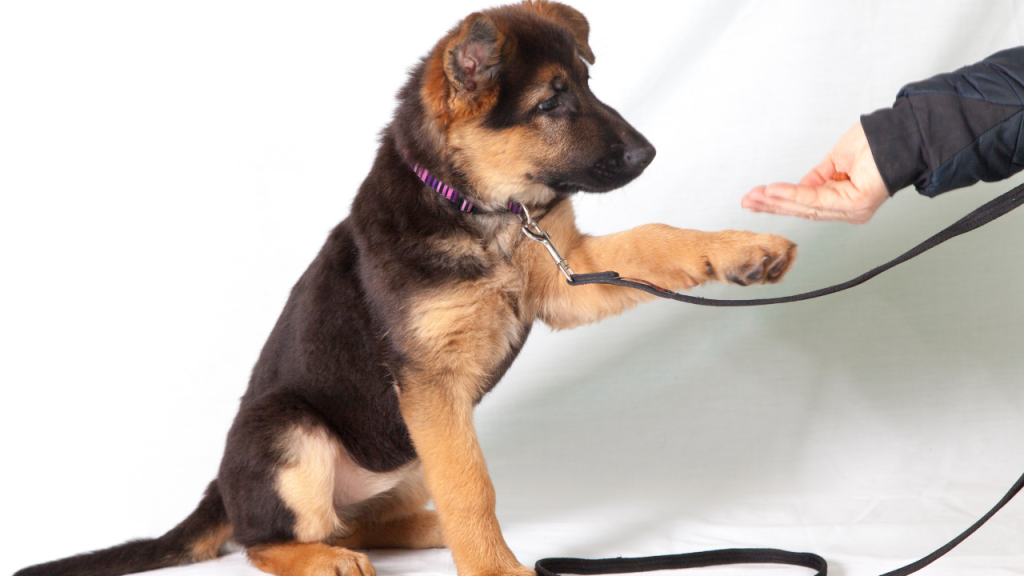The Importance of Positive Reinforcement in Dog Training

The Benefits of Positive Reinforcement in Dog Training
Training a dog is a multifaceted undertaking that transcends simple obedience. At its core, effective training hinges on understanding canine behavior and nurturing a positive relationship between the pet and its owner. Positive reinforcement techniques target the desirable actions and behaviors of dogs by providing rewards, and this approach has seen a rise in popularity across the United States due to its effective and compassionate nature.
The benefits of employing positive reinforcement in dog training are extensive and profoundly impactful. Here are some key advantages:
- Encourages Good Behavior: Rewarding desired actions, such as sitting on command or walking calmly on a leash, reinforces those behaviors. For instance, if a dog receives a treat for lying down instead of jumping up, it is more likely to repeat that behavior in the future.
- Strengthens the Bond: Positive reinforcement creates shared positive experiences, fostering trust and strengthening the emotional bond between a dog and its owner. This not only promotes an understanding of commands but also builds a lasting partnership where the dog feels valued.
- Reduces Fear and Anxiety: In a supportive atmosphere, dogs are less likely to feel fearful or anxious. When they associate training sessions with rewards and kindness, it leads to a secure environment, important for effective learning. For example, a dog that does not fear reprimand is more open to trying new things and learning new commands.
Furthermore, the scope of behaviors that can be taught through positive reinforcement is vast. Whether it’s mastering basic commands like “sit” and “stay” or learning advanced tricks such as rolling over or playing fetch, this method is incredibly versatile. Research indicates that dogs trained through positive reinforcement not only obey commands more reliably but also exhibit fewer behavioral problems, such as barking excessively or engaging in destructive actions.
As dog owners and trainers navigate the complexities of effective training methods, positive reinforcement emerges as a crucial strategy. It empowers both the trainer and the dog, paving the way for a collaborative learning environment that enhances the well-being of all participants. The impact of this method extends beyond mere obedience; it enriches the lives of both the pets and their owners, fostering harmony and satisfaction in the household.
In conclusion, positive reinforcement is far more than a training technique; it is a philosophy that nourishes trust and love between humans and their canine companions. By understanding and implementing this approach, you can unlock a world of possibilities for a happier, more engaged pet.

DIVE DEEPER: Click here to discover more about pet adoption
Unlocking the Power of Positive Reinforcement
Positive reinforcement is not just an effective training technique; it encapsulates a progressive shift in how we approach dog training and animal behavior. Central to this method is the understanding that dogs respond better to rewards than to punishment. This fundamental principle can be traced back to behavioral psychology, where it has been widely recognized that rewarding desired behaviors encourages their repetition. For dog owners and trainers, this translates into not only more effective training sessions but also a happier, more engaged pet.
The Science Behind Positive Reinforcement
Research has consistently shown that dogs trained using positive reinforcement demonstrate better responsiveness to commands and display significantly fewer behavioral issues. A study conducted by the American Veterinary Society of Animal Behavior revealed that dogs trained through positive means display increased confidence and reduced anxiety levels. This is particularly crucial in creating an environment conducive to learning. When dogs associate training with treats or praise, they are more inclined to participate actively and eagerly in training sessions.
Creating an Engaging Learning Experience
Training your dog through positive reinforcement is not just about throwing a treat every time they obey a command. It involves creating a comprehensive learning experience that includes:
- Clarity of Commands: Clear and consistent commands are essential. When owners use the same words and gestures for commands each time, it helps the dog understand expectations better.
- Immediate Rewards: The reward should follow the desired behavior swiftly, ideally within seconds, to help the dog make the connection between the behavior and the reward.
- Diverse Rewards: Using a variety of rewards—from treats to playtime or verbal praise—prevents the dog from becoming disinterested in the training sessions.
This multi-faceted approach is designed to keep dogs motivated and engaged during training, reducing stress and making learning enjoyable for both the trainer and the pet. A positive atmosphere encourages dogs to experiment with their behavior. For example, if a dog successfully learns to sit and is rewarded with a favorite toy, that positive experience builds their confidence, fostering a willingness to try new skills.
Long-Term Behavioral Changes
As dogs continue to respond to positive reinforcement, they often demonstrate longer-lasting changes in behavior compared to those subjected to traditional training methods which rely on punishment or negative reinforcement. For instance, dogs trained through positive reinforcement tend to develop strong reliability in obeying commands, thereby exhibiting fewer problems such as excessive barking or aggression. This approach promotes a balanced and well-adjusted pet, ultimately leading to an enriching relationship with the owner.
The importance of positive reinforcement in dog training cannot be overstated. By creating a nurturing environment that reinforces desired behaviors and fosters trust, dog owners are not just teaching commands—they are building a mutual language that enhances the overall well-being of both themselves and their dogs.
The Importance of Positive Reinforcement in Dog Training
Positive reinforcement is a training method that leverages rewards to encourage desired behaviors, making it an essential strategy for effective dog training. The core principle involves providing a reward, such as treats, praise, or playtime, immediately following a good behavior. This technique triggers the release of feel-good hormones in dogs, allowing them to associate the action with positive outcomes. Consequently, dogs become eager to repeat behaviors that yield rewards, fostering good habits over time.This method not only enhances the learning experience for dogs but also strengthens the bond between the dog and the owner. In contrast to punitive methods which can instill fear or anxiety, positive reinforcement creates a trusting environment. As a result, dogs trained with positive methods are often more confident and responsive. Studies have shown that dogs trained with positive reinforcement exhibit reduced stress levels and improved overall well-being.To further explore the tangible benefits of this training technique, let’s take a look at a structured overview of its advantages in the following table:
| Category | Benefits |
|---|---|
| Effective Learning | Dogs learn faster and retain behaviors longer when rewarded. |
| Improved Relationship | Strengthens the bond, fostering trust and mutual respect. |
Understanding the significance of positive reinforcement is pivotal in becoming a successful dog trainer. This method goes beyond mere obedience; it enhances the dog’s quality of life while simultaneously enriching the owner’s experience. Such insights lay the groundwork for deeper exploration into innovative training techniques and the psychology behind how dogs respond to different learning styles.
DISCOVER MORE: Click here to learn about the benefits of adopting pets
Building a Trusting Relationship Through Positive Reinforcement
One of the profound impacts of positive reinforcement is its ability to cultivate a trusting relationship between dogs and their owners. Traditional training methods that incorporate harsh corrections can lead to fear and resentment in dogs, creating unhealthy dynamics. In contrast, positive reinforcement helps foster an environment of trust and security.
The Emotional Connection
Dogs are highly social animals that thrive on emotional connections. When training focuses on reward-based methods, it empowers dogs to look to their owners for guidance and support. This reinforces the idea that their human is a source of positive experiences, making them more willing to learn and engage. Studies indicate that dogs trained using positive reinforcement display enhanced emotional responsiveness. They learn to associate their owners with pleasurable experiences, leading to a more profound connection.
Promoting a Lifelong Learning Mindset
Positive reinforcement doesn’t just apply to basic commands; it can be a lifelong approach to nurturing a dog’s well-being and adaptability. Offering rewards encourages dogs to explore their environment and engage in problem-solving skills. For example, pet owners can set up interactive puzzles that reward dogs with treats for solving challenges. This approach not only relieves boredom but also encourages mental stimulation, which is essential for a dog’s overall health.
Moreover, behavior training shouldn’t be restricted to young dogs; elderly dogs can also benefit from this method. Many older dogs enter shelters due to behavioral issues stemming from stress or lack of attention. With positive reinforcement, it’s possible to help these dogs adjust even in their later years. Modifying an older dog’s behavior through a reward-based system can lead to renewed vitality and playfulness, enhancing their quality of life.
Positive Reinforcement in Real-Life Situations
Implementing positive reinforcement doesn’t have to be limited to training sessions. It can seamlessly integrate into everyday activities. Simply praising a dog for walking politely on a leash or lying quietly during household tasks reinforces good behavior. For instance, incremental rewards for calm behavior while waiting for food can make meal times more manageable, helping to eliminate fussiness. This approach teaches dogs to relax in situations that may initially provoke excitement or anxiety.
Various dog trainers across the United States highlight the importance of positive reinforcement not just for immediate compliance but for long-term behavior management. Workshops and seminars advocate this method as being essential for building a dog’s confidence while ensuring they respond positively to commands. By reinforcing good behavior, owners create a dynamic where training becomes less of a chore and more of a fun interaction.
Addressing Behavioral Problems Safely
Many dog owners grapple with behavioral issues, ranging from separation anxiety to hyperactivity. Positive reinforcement has shown promise in addressing these concerns effectively and humanely. For instance, rewarding a dog for staying calm during a brief period of alone time can gradually desensitize them to separation stress. Simultaneously, when dogs exhibit excess energy, incorporating play with rewards can channel that energy into constructive behaviors.
The bottom line is that by focusing on positive reinforcement methods in training, dog owners not only instill obedient habits but also enhance behavioral well-being, paving the way for a fulfilling partnership throughout a dog’s life. The journey of dog training is more than just command compliance; it’s about nurturing a bond that lasts a lifetime.
DISCOVER MORE: Click here to learn how positive reinforcement can enhance your pet’s behavior
Conclusion: Embracing Positive Reinforcement for a Harmonious Partnership
In summary, the importance of positive reinforcement in dog training cannot be overstated. This approach not only strengthens the human-animal bond but also enhances the emotional well-being of dogs. By providing rewards and praise for desirable behaviors, owners cultivate a trusting atmosphere that encourages their pets to thrive. This method transforms training from a potentially stressful experience into a rewarding and engaging interaction, thereby fostering a lifelong learning mindset in dogs.
Positive reinforcement has far-reaching implications that extend beyond merely teaching commands. It supports mental stimulation, alleviates behavioral issues, and instills confidence in our furry companions. As we implement training techniques rooted in appreciation rather than correction, we see our pets respond not just with obedience, but with enthusiasm and joy. Additionally, this humane approach proves beneficial across various stages of a dog’s life, from energetic puppies to senior dogs seeking companionship and adaptability.
Furthermore, integrating positive reinforcement into everyday routines allows owners to consistently reinforce good behavior, creating a more harmonious living environment. As dog trainers and animal behaviorists advocate these methods, it becomes evident that a commitment to positive reinforcement is essential for promoting not just obedience, but a truly fulfilling relationship between dogs and their owners.
Ultimately, the journey of dog training is an opportunity to nurture a lifelong partnership that is grounded in trust and mutual respect. Embracing positive reinforcement opens the door to an enriching and joyful life together, making every moment with our canine friends a cherished experience. For those seeking to explore this approach further, numerous resources and local training workshops are available, allowing dog owners to deepen their understanding and application of positive reinforcement techniques.


